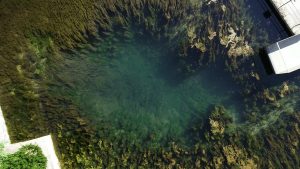Woodpeckers
Woodpeckers are the typical forest inhabitants in the bird world. They use their hard and angular beak like a chisel to create holes in suitable trees. They raise their young there or use them as a place to sleep. Since the smaller woodpecker species in particular only use their holes for one year, every year they create new “apartments” for other animals that move into the abandoned woodpecker holes as subsequent users (e.g. other hole-breeding birds, bats and other mammals or insects such as bumblebees, hornets and stag beetles).
The most common species of woodpecker in the Senne is, as everywhere in Germany, the great spotted woodpecker. It occurs in almost all types of forest, even in parks and gardens. The black woodpecker, our largest species of woodpecker, is much more demanding. It needs larger forests and enough old and dead wood to build his football-sized holes and find enough food. Since its territories are often several square kilometres, it is much rarer than the great spotted woodpecker, but is also very noticeable due to its body size and the loud calls and drumming. The green woodpecker can also be heard and seen regularly in a well-structured landscape, as its populations have increased significantly in recent decades due to milder winters. On the other hand, grey woodpeckers, medium-sized woodpeckers, small woodpeckers or even the wryneck, which are also found in the Sennearea, are less common.









